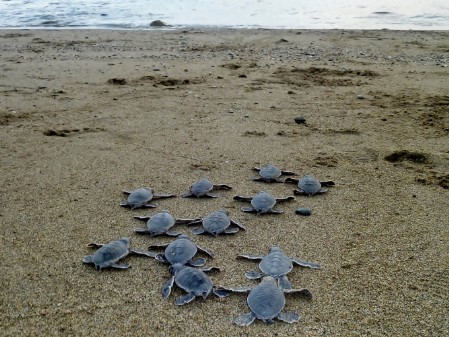
A batch of Green Turtle hatchlings racing toward the sea.
Hatching, Emergence and Release
It takes about 60 days for the baby sea turtles to develop, hatch and appear on the nest surface.
However, the duration of incubation also depends on weather conditions: we observed sea turtle hatchlings emerging as early as 52 days during hot seasons and as late as 83 days during the colder months.
Once close to the calculated date, we check the nests at least three times per day for any signs of impending emergence.
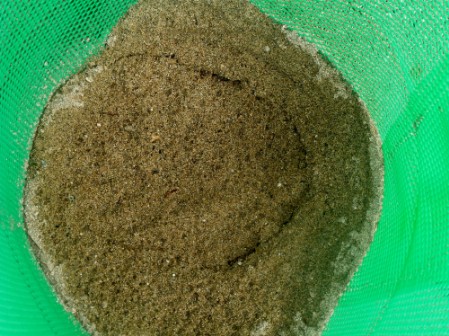
A cracked nest surface indicates that emergence is in progress.
It may take several days from hatching to emergence. A first indication of what is about to happen, is the break of the nest surface. Whilst the baby turtles hatch inside and dig themselves up towards the surface their combined movements push down the empty egg shells and sand.
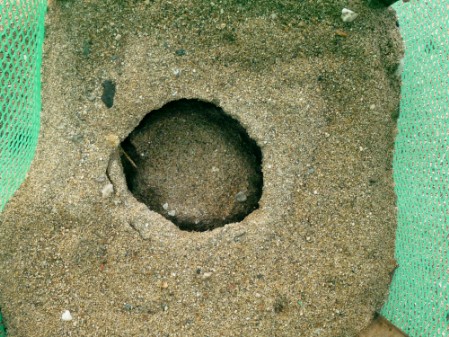
A collapsed nest surface with signs of the first baby turtle ready to emerge.
Eventually the nest surface will collapse and the heads of the baby turtles appear.
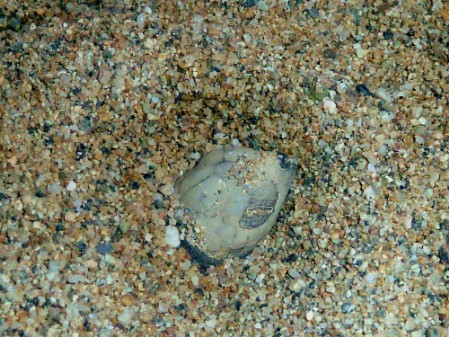
Olive Ridley:
the head of the first hatchling appears on the nest surface.
the head of the first hatchling appears on the nest surface.
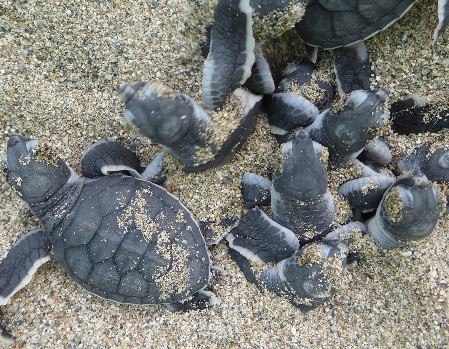
Green Turtle: with the first ones roaming on top, more are breaking through the nest surface.
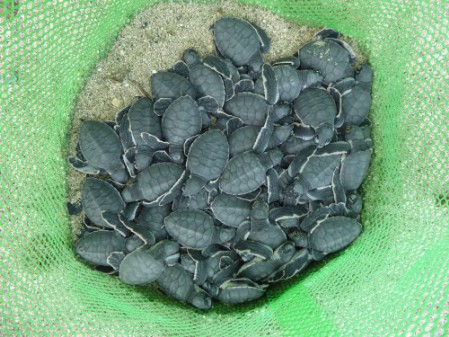
Green Turtle: within in minutes the nest surface is covered with lively hatchlings.
As the actual hatching process happens deep inside the nest, we cannot observe the breaking of egg shells. In order to document the hatching behaviour we would need a very specific (and expensive) camera set-up to be installed at the time of egg transfer.
There is safety in numbers:
baby turtles usually emerge in bulk once one or two have made the initial break through the sandy nest surface.
Did you know that baby turtles coordinate their hatching and emergence through sound? Latest studies have confirmed that all sea turtle species communicate inside the nest, even during their embryonic phase, by using a series of harmonic, non-harmonic and pulse vocalizations within the same frequency range.
Closer to hatching time and during the emergence process, these vocalizations increase at a higher frequency range. It was concluded that the hatchlings use the sound to coordinate their activities - and emerge in bulk.
We quickly and carefully place the baby turtles in a bucket filled with damp sand at the bottom for an immediate transfer to the beach, just a few meters away from the hatchery site.
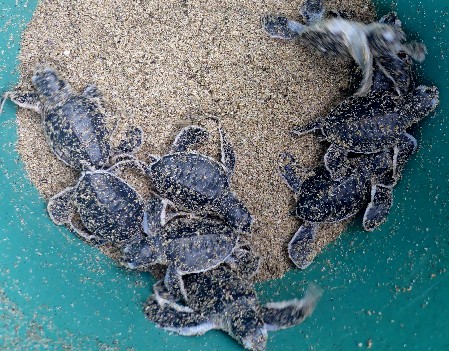
Lively Green Turtle babies eager to start their lives at sea.
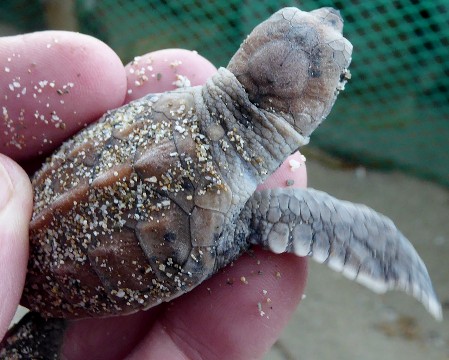
Brief exam of a Hawksbill hatchling before release.
Pawikan Patrol strictly observes the "no-holding" protocol: we release baby turtles immediately and without too much touching. They need all their energy to survive the first weeks of ocean life. During this critical stage of their life cycle, the baby turtles are in a swim frenzy, living of the remaining absorbed egg yolk.
We watch over them as they cover the distance between nest and ocean unaided. They need to complete this first step of their journey entirely by themselves to gain the neccessary magnetic imprint of the nesting beach. Only the females will return in 15 to 30 years to lay eggs at their birth beach; the males will spend their entire life at sea.
How many will survive to adulthood?
1 in 1000!
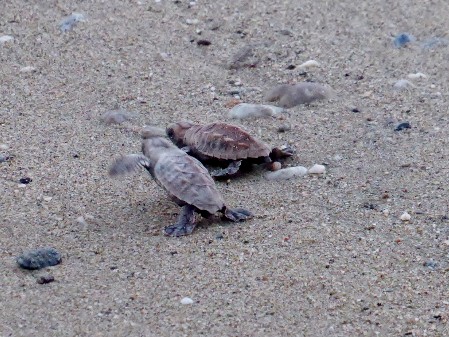
Two very lively Hawksbill babies racing to reach the sea.
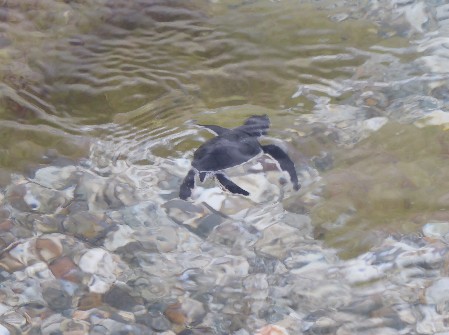
In the water - a Green Turtle hatchling swimming away from the shore.
Under Water
A Green Sea Turtle baby on its first swim.
Clearing the Nest
Our work is not finished with the release of the baby turtles: we need to clean the egg chamber by removing all egg shells and unhatched eggs and look for any stragglers. The nest then remains open to aerate for several days.
Pawikan Patrol has a sufficiently high release percentage: above 85% for Green Turtles compared with in-situ hatching at 45% or less. This justifies the use of a hatchery site for as long as conservation management of the natural nesting beach is not secured.
However, there is never a 100% success rate. Not all eggs of a batch will develop for a variety of reasons, e.g. non-fertilized eggs, or infection by parasites, or inadvertent movement during transport.
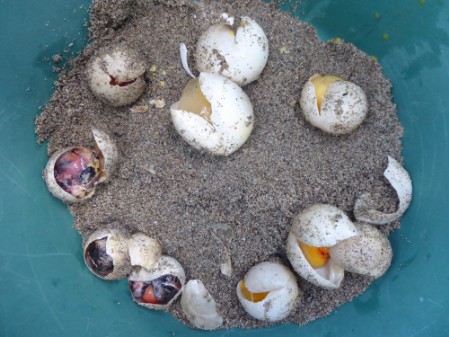
The remains of a cleared egg chamber.
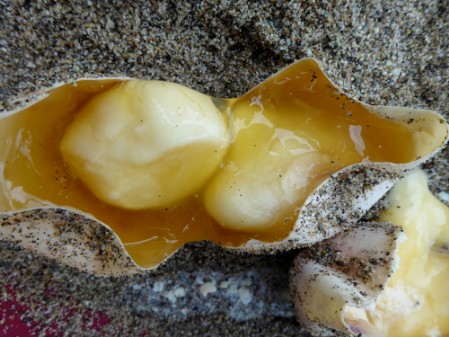
A rare observation of an undeveloped DOUBLE egg yolk.
After cleaning the egg pit and before burying the remains on the beach away from the hatchery site, Pawikan Patrol members investigate the number of unhatched eggs: are they completely undeveloped or do they show any signs of interrupted development ? We record the results for a later evaluation and comparison with those of previously collected data.
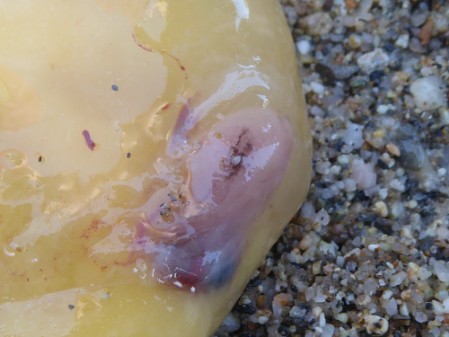
Development stopped at an early stage.
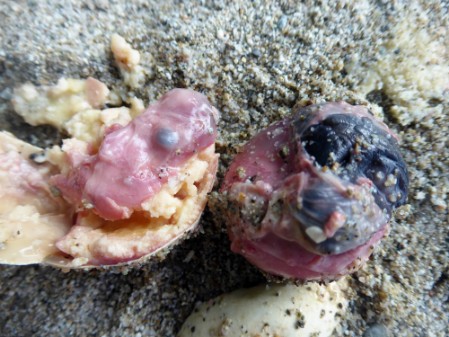
Developement stopped-possibly parasitic.

Burial of the remains in safe distance from the hatchery site.
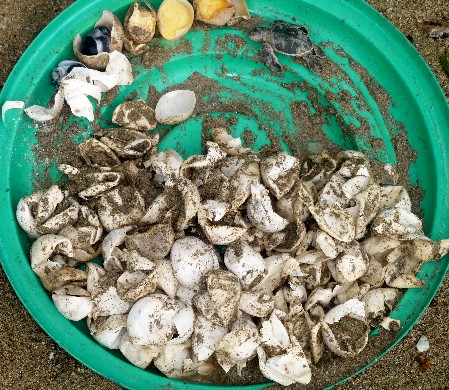
Documenting the result of the nest clearance.